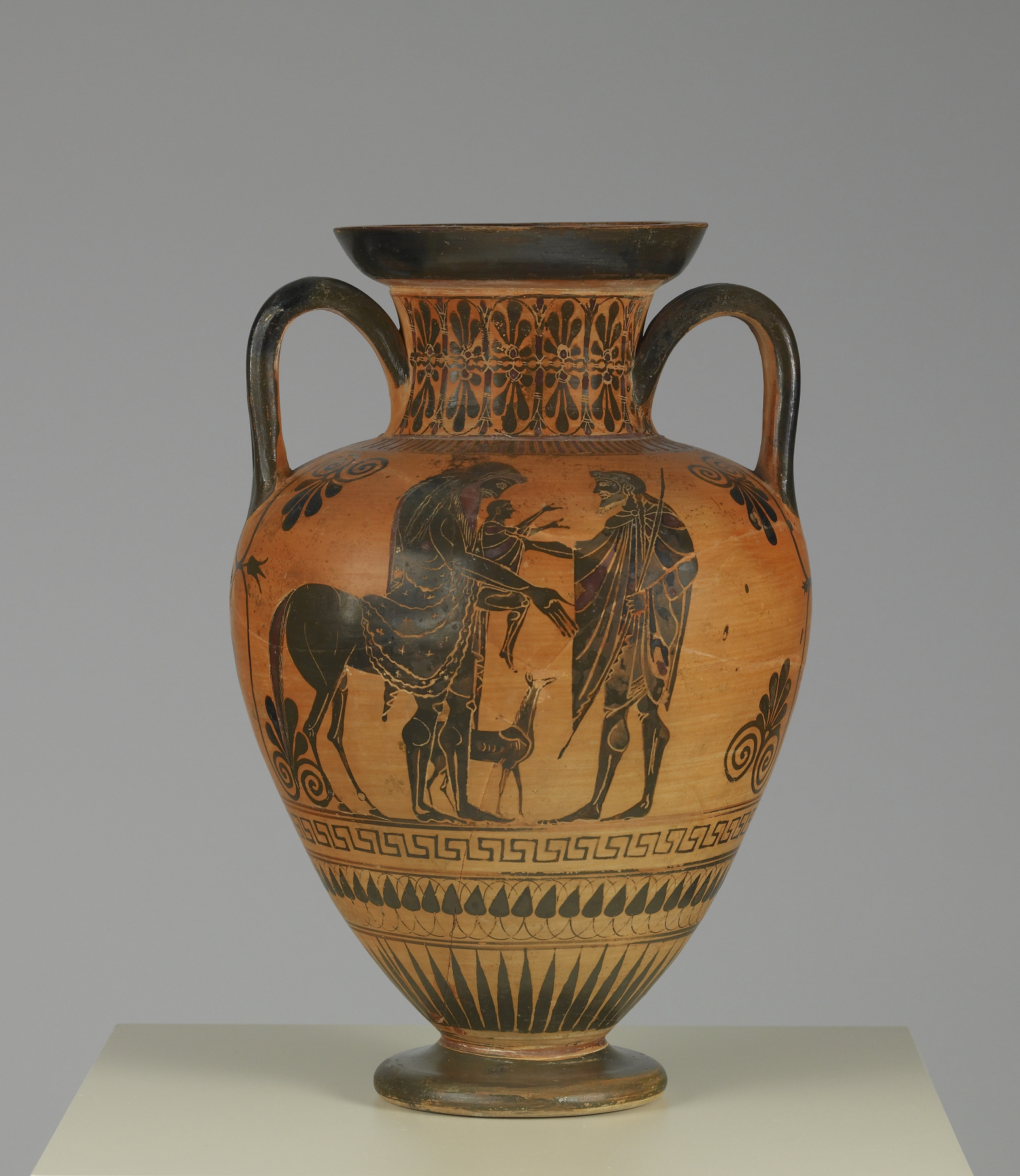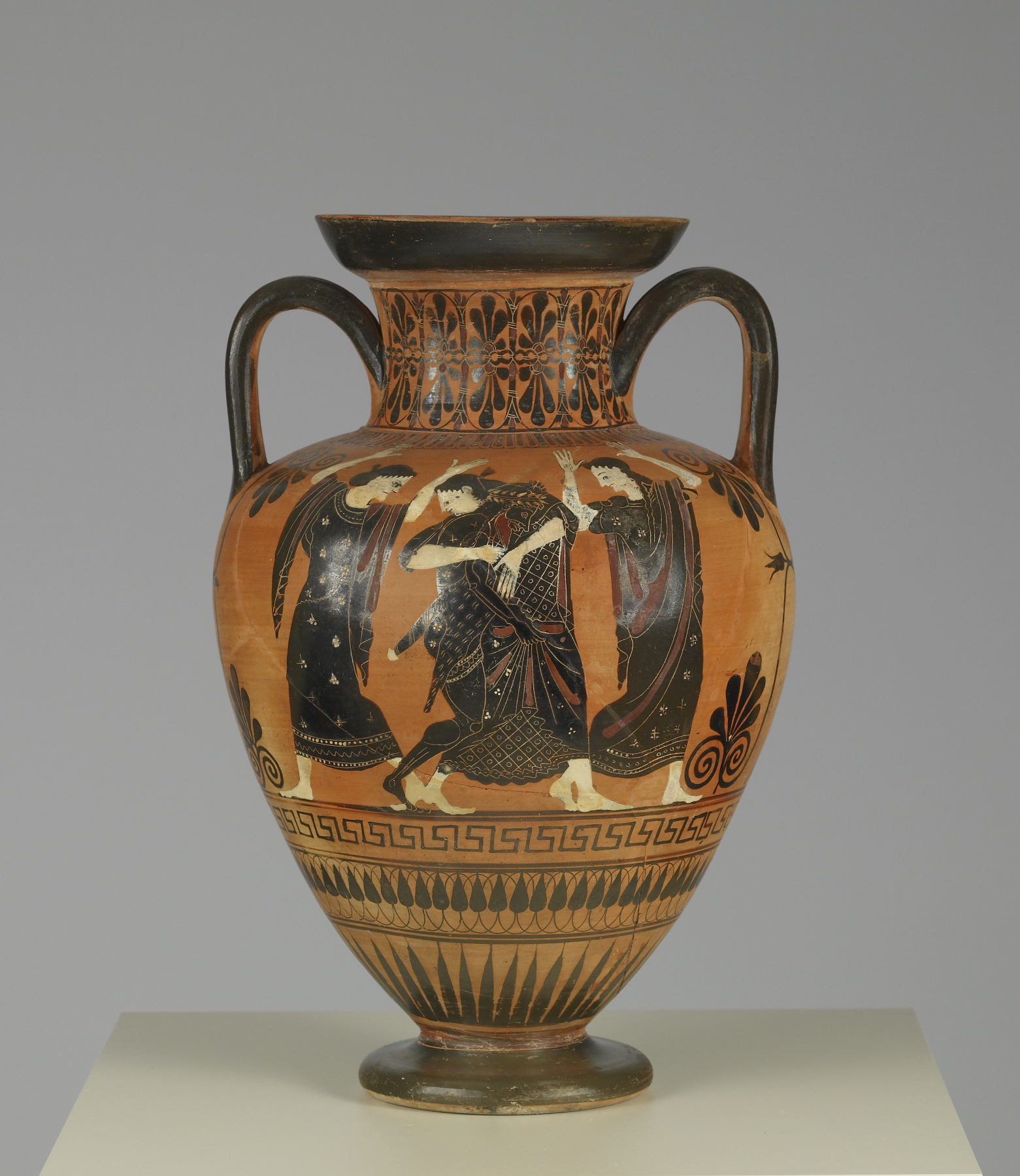Neck Amphora with Scenes of Peleus, Thetis, and Achilles
(Ancient Greece )
Both sides of this amphora are decorated with themes concerning Achilles' conception and the accession to manhood. Side A refers to him indirectly, showing the encounter and the binding of his parents: the divine Nereid Thetis and the mortal hero Peleus, who was renowned for his many glorious deeds. The union of supernatural and human resulted in Achilles, immortal through the efforts of his mother but for his vulnerable heel.
Peleus found Thetis with her sisters on a beach, managed to abduct and marry her, despite her threatening metamorphoses. The hero wears a "chitoniskos," an outfit commonly associated in the visual arts with heroes and hunters. The animal skin that he wears and his sword signal his heroic spirit. The wreath of olive branches on his head foretells the victorious ending of his attempt. The marine goddess does not show any indication of undergoing a transformation, as she often does in other representations of this episode.
In the second scene (Side B) Achilles is a young boy. The episode is the entrusting of the hero to the wise centaur Cheiron, a renowned teacher. Peleus is depicted as a mature and gentle father, unarmed, with a "chlamys" and a staff. He is handing his child over to Cheiron, who has already taken hold of his student with his left arm. The infant Achilles raises both arms toward his father in a tender gesture.
Provenance
Provenance (from the French provenir, 'to come from/forth') is the chronology of the ownership, custody, or location of a historical object. Learn more about provenance at the Walters.
Don Marcello Massarenti Collection, Rome, before 1897 [mode of acquisition unknown] [cat. no. 203]; Henry Walters, Baltimore, 1902, by purchase; Walters Art Museum, 1931, by bequest.
Exhibitions
| 2009-2011 | Heroes: Mortals and Myths in Ancient Greece. The Walters Art Museum, Baltimore; Frist Center for the Visual Arts, Nashville; San Diego Museum Of Art, San Diego; Alexander S. Onassis Public Benefit Foundation (USA), New York. |
| 2003-2004 | Coming of Age in Ancient Greece. Hood Museum of Art, Hanover; Alexander S. Onassis Public Benefit Foundation (USA), New York; Cincinnati Art Museum, Cincinnati; J. Paul Getty Museum, Los Angeles. |
Conservation
| Date | Description | Narrative |
|---|---|---|
| 5/3/1999 | Treatment | cleaned; stabilized; reconstructed; loss compensation |
| 10/3/2002 | Loan Consideration | examined for loan |
Geographies
Greece, Athens (Place of Origin)
Measurements
H: 16 x Diam: 10 1/2 in. (40.6 x 26.7 cm)
Credit Line
Acquired by Henry Walters with the Massarenti Collection, 1902
Location in Museum
Accession Number
In libraries, galleries, museums, and archives, an accession number is a unique identifier assigned to each object in the collection.
In libraries, galleries, museums, and archives, an accession number is a unique identifier assigned to each object in the collection.
48.18




